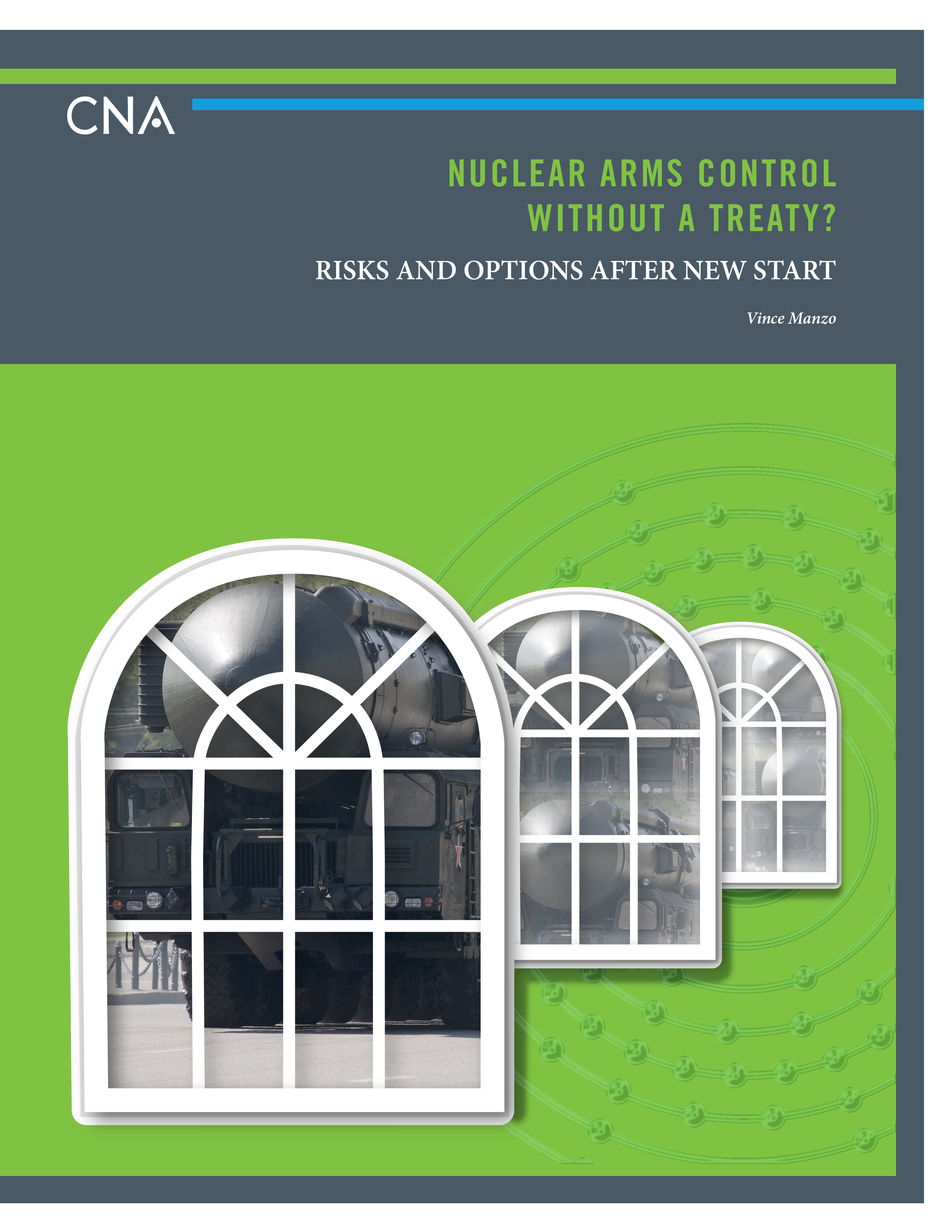This report explores risks and US policy options for a specific scenario: The New Strategic Arms Reduction Treaty (START) expires with no follow-on treaty in tow. We identify the key risks and uncertainties the United States and Russia would face after New START and develop a portfolio of policy options for mitigating them. We also identify the impact US-Russian nuclear dynamics after New START may have on China’s nuclear policy and posture, and then explore potential policy options for the US-China relationship. By exploring the risks of a world without a treaty, as well as the value and limitations of arms control options outside of a treaty framework, this report also provides a frame of reference as the United States and Russia prepare for the near-term decision on New START extension and the longer-term decision on how to approach its eventual expiration. Our working definition of arms control for this study is any form of cooperation between potential adversaries designed to reduce the risks of war and nuclear escalation and/or restrain arms competitions. When we use the term “nuclear arms control without a treaty,” we are referring to cooperative options that serve these objectives through means other than a treaty.
In practice, the United States has relied upon strategic nuclear arms control with Russia to further these objectives by fulfilling one primary role and two secondary roles in US strategy:
- Primary Role: Fostering a predictable nuclear relationship with Russia through transparency and binding constraints on nuclear forces.
- Secondary Roles: Strengthening US nuclear non-proliferation strategy and contributing to sustaining US extended deterrence and alliance solidarity.
RISKS AFTER NEW START
If New START expires without an imminent replacement treaty, the United States would face increased risks and uncertainties in its relationship with Russia, its nuclear non-proliferation strategy, and its ability to sustain solidarity within the North Atlantic Treaty Organization (NATO).
From Transparency to Opacity
Without New START’s cooperative transparency practices, the US intelligence community would likely devote more resources to monitoring Russian strategic nuclear forces but have less insight and less confidence in its analytical judgements. The United States would face an opportunity cost of diverting scarce national technical means (NTM), such as satellites, and technical analysts from other missions. Russian defense officials would also navigate increased uncertainty and lose the ability to confirm that the United States has not reversed its New START reductions. Neither country would have the same degree of confidence in its ability to assess the other’s precise warhead levels. Worst-case scenario planning is also more likely as a result.
Over the longer term, both countries are likely to face greater uncertainty about each other’s strategic nuclear forces and operations. Understanding of day-to-day postures and movements of forces will diminish and both will have less insight into the characteristics and operations of new strategic nuclear systems. Based on current trends, increased opacity between US and Russian strategic nuclear forces would unfold within the broader context of growing mistrust and diverging perceptions about strategy, intentions, and capabilities.
No Constraints on Strategic Nuclear Forces
The loss of legally-binding constraints on US and Russian strategic nuclear forces would also confront each country with near- and long-term risks and uncertainties. In the mid-to-late 2020s, both countries will have the capacity to exceed New START limits in different ways. Each can increase their available warheads by hundreds, but neither has the capacity to significantly alter the relative balance by exceeding New START limits if the other chooses to do so as well. Based on their existing policies, however, both countries would have logical reasons to increase strategic nuclear force levels as a hedge against the other surpassing the New START limits. The loss of New START’s transparency measures exacerbates this dynamic. Compounding uncertainties, such as US and Russian strategic nuclear force levels and investments in the 2030s, cloud assessments about an unconstrained US-Russian nuclear relationship over an extended period of time.
Challenges to Nuclear Non-Proliferation and Extended Deterrence
Washington and Moscow would face heightened credibility challenges within the Nuclear Non-Proliferation Treaty (NPT) and would no longer have their bilateral arms control framework as a tangible example of cooperation under their Article VI obligations to work toward complete nuclear disarmament. The narrative of a renewed arms race could fuel discontent within the NPT and elevate alternative mechanisms, such as the Treaty on the Prohibition of Nuclear Weapons, that would be less effective for reducing nuclear risks and could have counterproductive consequences. If US allies perceive the United States as mismanaging its relationship with Russia and failing to put forward a serious nuclear risk reduction strategy, it would also face greater challenges uniting NATO around a common security strategy. Some NATO states might see a domestic backlash against nuclear burden sharing.
China after New START
China postures its nuclear forces to provide an assured ability to retaliate after a nuclear attack, with the United States as its pacing threat. In this sense, China has been a beneficiary of the predictability provided by US-Russian nuclear arms control agreements. US-Russian nuclear interactions after New START could exacerbate the factors underlying China’s nuclear expansion, though the precise impact is impossible to predict. These dynamics could drive further quantitative increases in China’s theater and intercontinental-range delivery vehicles and nuclear warheads or qualitative changes in China’s nuclear posture, such as such as longer ballistic missile submarine patrols, keeping a portion of mobile ballistic missiles on launch-ready status or dispersed, and adopting a Launch Under Attack option. While the United States might conclude these changes do not have a military impact, Japan might perceive them as undermining the US security commitment. Currently the United States and China have no cooperative framework for insulating their nuclear relationship from the end of New START and other developments in the global nuclear landscape.
Download reportDistribution unlimited. Specific authority contracting number: G-18-55729. Request additional copies of this document through inquiries@cna.org.
Details
- Pages: 144
- Document Number: IRM-2019-U-019494
- Publication Date: 3/1/2019
